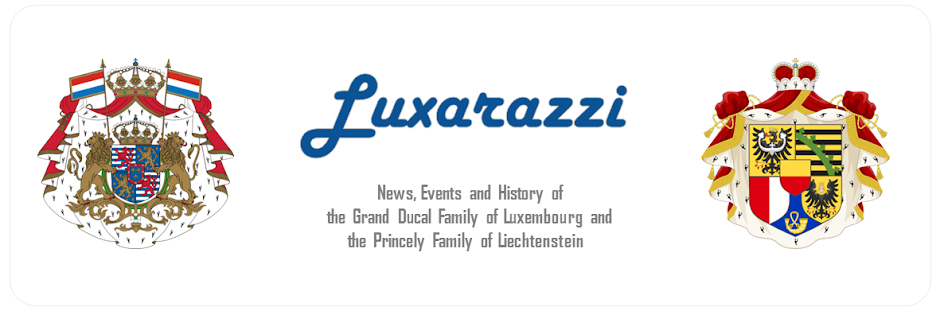The history of the palace starts in 1687 when Prince Johann Adam I bought land in the Rossau from the Auersperg family. Located just outside of the city walls of Vienna, a self-contained model estate named Lichtenthal, one of the rare examples of large-scale Baroque urban planning in Vienna, was developed on said and additional parcels of land. Lichtenthal included the
Gartenpalais as well as
the Sommerpalais located on the opposite side of the garden.
 |
| The original Gartenpalais |
A year later, Prince Johann Adam I invited different architects to come up with plans for a palace and likely due to his love for Italian artists, the Prince chose the plans of Domenico Egidio Rossi of the Bologna school. Starting in 1692, his plans of a palatial urban villa in the Roman style, were carried out by Luccanese architect Domenico Martinelli. The palace's shell was finished around 1700, however, works on the palace's interior continued for many years.
Prince Johann Adam I wanted to commission his favourite Italian painter Marcantonio Franceschini for the interior decoration of the
Gartenpalais but the man from Bologna couldn't be convinced to travel to Vienna. Instead Johann Michael Rottmayr from - in difference to Bologna - nearby Salzburg created the fresco cycles in all areas of the ground floor as well as the two staircases starting in 1705. However following water damage, these frescos were covered up by stucco-framed oil paintings of Antonio Bellucci during the 19th century and only rediscovered and subsequently reconstructed during the early 2000's.
 |
| The Sala Terrena hall |
While the Prince could not convince Marcantonio Franceschini to come to Vienna, there are several oil paintings by the Italian artist that were integrated into the ceiling panels of several rooms. Renowned stuccoer Santino Bussi created rich stucco decoration throughout the entire
Gartenpalais. The palace's biggest room, the
Herkulessaal or Hercules Hall, was designed by Baroque painter Andrea Pozzo and include a monumental ceiling fresco depicting 'The Admittance of Hercules to Olympus'. The sculptures throughout the palace were created by Giovanni Guiliani.
During the following centuries, Prince Johann Adam I's Baroque ensemble underwent several changes. During the late 18th century, the entrance portal, which was integrated into the semi-circled stables, was changed into a classical triumphal arch by court architect Joseph Hardtmuth. In 1814, Harthmuth's successor as court architect, Joseph Kornhäusel, had the arch as well as the stables torn down and added the still existing fence thus opening the whole ensemble to an outsider's view.
 |
| The Hercules Hall |
While the
Gartenpalais had previously been used privately, Prince Johann I decided that paintings and other works of art owned by the Princely Family should be brought together and exhibited to the general public - well, those who could afford it - at the palace. In 1807, the museum was opened. However, various changes were made to the palace prior to the opening to accomodate the museum: For example, some windows were walled up to allow pictures to be hung on the walls instead. In addition, four of the five doors between the Hercules Hall and the Great Gallery were closed to make room for Rubens'
Decius Mus Cycle and, as previously mentioned, the Rottmayr frescos were covered up to exhibit paintings by Belluci which originally belonged to the
Stadtpalais.
At the time of the museum opening, the
Herkulessaal was classically decorated, however, at the beginning of the 20th century, these changes undone and some neo-Baroque decorations like stucco panels and fireplaces added. Five Franceschini paintings were hung on the inner longitudinal wall and the walls of the gallery rooms were painted in shades of blue and green.
 |
| The library |
Towards the end of the 19th century, the five open round arches of the
Sala Terrena hall on the ground floor were glazed to preserve the interior which had previously been subjected to the weather conditions. In 1897, an elevator was added to bring the visitors to the second floor. Between 1912 and 1914, the princely library containing some 100,000 books from the 15th to 19th century was brought to the
Gartenpalais.
In 1938, after the
Anschluss of Austria into Nazi-Germany, the Princely Family moved their main residence from Vienna to Liechtenstein and the
Gartenpalais was closed. Luckily, they were able to bring their art collection to the Principality prior to the end of the Second World War so that nothing was destroyed. Between 1957 and 1978, the palace was home to the
Österreichisches Bauzentrum museum. Subsequently, the Museum of Modern Art Foundation Ludwig Vienna moved in until 2000.
Starting in 2001, the
Gartenpalais was thoroughly renovated to fulfill all fire prevention, security and air-conditioning requirements for a modern museum which was to be opened at the palace once again. During the renovations, which cost around 25 million euros paid for by Prince Hans-Adam II, several changes to the palace from previous centuries were undone to create a harmonious whole. After three years of work, the
Gartenpalais was re-opened as a museum for
the Princely Collection of the House of Liechtenstein including
the Golden Carriage of Prince Joseph Wenzel in 2004.
After disappointing numbers of visitors also due to the fact that the palace is located a outside of the usual flow of Vienna tourists, the museum was closed in 2011. Since 2012, the
Gartenpalais can be rented as a venue for all kinds events such as gala dinners, weddings, concerts and more. It can still be visited as a museum but only once a month during a guided tour.






No comments:
Post a Comment